Introduction
As marketers, we face plethora of decision making, some creative (Left Brain) and some data driven(right brain). They could be in terms of which customers to target, channels to invest, content to create, and so on.However, a key aspect of this decision making is the option which helps us achieve the marketing objectives.
In fact, 21% of the marketers say that ROI is one of the biggest challenges they face. CIM Exchange lists “Demonstrating Marketing’s Value” is the top challenge. One aspect of the problem is for Marketing Teams to demonstrate the value of marketing, Showcasing how much pipeline marketing brings to the business, and how campaigns have contributed to business growth is crucial for getting further buy in from CXOs and leadership..
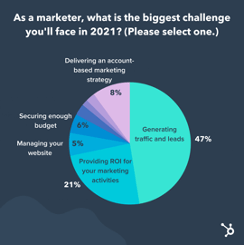
In other words, the challenge is to understand which Marketing efforts to emphasise, optimize, or discontinue. Further, focussing on too many things sometimes make the efforts spread too thin, and one fails to effectively understand the impact.
The most important part of this puzzle is solving the attribution problem.
What is Marketing Attribution?
Marketing Attribution is the method organizations use for attributing conversions to Marketing channels. Basically, this means that if you have a SEO campaign, Google ads, Instagram Ads, Youtube Videos or a Referral Program, which one of these were responsible for the sale (or conversion). The use of Marketing Attribution Models helps Marketers to know the campaign that should gain credit for each conversion.
A typical Customer Lifecycle
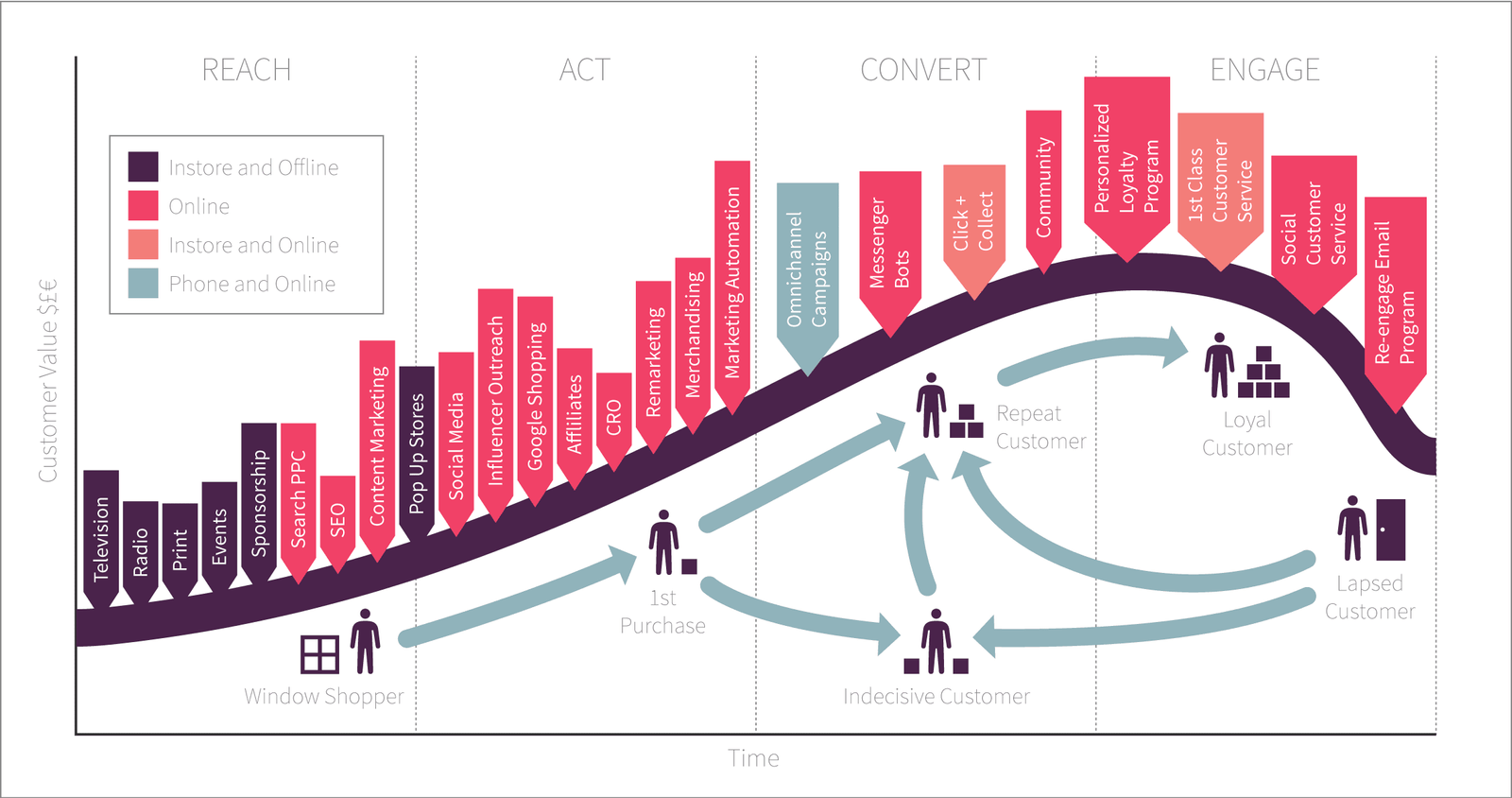
An accurate Marketing Attribution Model would correctly distribute and assign credit for the conversion. It can help understand the customer’s journey and how she or he interacts with the brand. Ultimately, it can help identify campaigns which are working (again, based on what the objective is) and optimize your spends to improve Return on Marketing Investment (RoMI).
What are the best Marketing Attribution Models?
Today, customer engage with brands on multiple devices and touchpoints. The reason is that businesses are using an integrated omni channel approach towards promoting their brands in the market.
Marketers today use Facebook, Instagram, LinkedIn and the Google ads ecosystem and many more to promote the same brand. However, every digital channel has its own analytics platform, which use different types of Marketing Attribution Models. Knowing how to integrate is central to running successful integrated marketing campaigns, with maximum scope of optimization.
Here’s the list of the best Marketing Attribution Models that you can consider using for your Marketing campaigns in 2021:
- First-Touch Marketing Attribution Model
- Last-Touch Marketing Attribution Model
- Last non-direct click attribution Model
- Position-based attribution model
- Multi-Touch Marketing Attribution Models
- Linear Multi-Touch Marketing Attribution Model
- U-Shaped Multi-Touch Marketing Attribution Model
- W-Shaped Multi-Touch Marketing Attribution Model
- Time Decay Multi-Touch Marketing Attribution Model
- Data Driven Marketing Attribution Model
First Touch Marketing Attribution Model
First Touch Model is also referred to as “first-click” or “first-interaction.” As the name suggests, this model gives 100% of the credit to the first interaction your brand had with a customer.
For example, a visitor clicks on Google search ad and discovers your brand or product. A week later they see your email and click on the link to go to your website and make a purchase.
The search ad will get all the credit for the sale in this instance. 100% of the value is thus awarded to that first touchpoint.

When is First Touch Marketing Attribution Model Good or Bad?
To begin with, let’s talk about the advantages of First Interaction Marketing Attribution Model. As you can see, it’s very simple and straightforward. This obviously helps in industries where there is a short sales cycle and the number of channels used are less than three. If there’s a tendency for the customer to convert quickly, the first interaction becomes very important. Also, for top of the funnel activities, the first touch model is quite helpful in understanding the impact of each channel.
However, the first touch model doesn’t consider the impact of the later channels. So, if the buyer’s journey is complex, involving multiple channels for entire marketing funnel and ad spends > €50k, this model will not be useful for you.
Last Touch Marketing Attribution Model
Last Touch Attribution is also known as “last click”, “last interaction” and “qualified lead” model. In line with the first-touch model, this model gives 100% of the credit to the last touchpoint the customer has interacted with before converting or purchasing.
For example, the customer arrives at your website through a search engine and browses the products. A couple of days later, he gets your LinkedIn ad, after which he clicks on it and purchases your product.
The LinkedIn ad, in this instance, gets all of the credit for that purchase. 100% of the value is assigned to that last touchpoint.
The Last-touch attribution model in default in Google Analytics, and many ad platforms. In fact, this model is used more frequently than the first touch model, possibly due to the interaction being closer to the purchase.

When is Last Touch Marketing Attribution Model Good or Bad?
Like the previous model, the Last touch model is also quite simplistic and easy to implement. Because the ease of tracking the customer before purchase is much easier, it is one of the most accurate models.
The downside of course is that the Last touch Model ignores all the previous touchpoints.
Again, if you have a short purchase journey, relatively lower number of converting channels, tracking bottom of the funnel activities or low ad budgets ( less than €50k) this model might work for you. This model is especially helpful for businesses with wide top of the funnel activities but narrow bottom of the funnel ones.
Last Non-Direct Touch Marketing Attribution Model
The last non-direct click attribution model is a variation of the Last Click Model. However, the only difference is that the model considers the last touchpoint that wasn’t direct traffic.
This model is better suited if you are witnessing a lot of conversions with direct traffic. Often these cases are a result of the customer being exposed to other channels first. When the purchase intent rises, the customer organically recalls the brand and visits the website.
This is also good for those not investing in SEO, and thus want to ignore direct traffic. You would then be interested in concentrating on your paid and other channels. This model helps you find the last trigger.
Multi-Touch Marketing Attribution Models
The three models discussed above have a serious demerit, when it comes to handling complex customer journeys. As you expand into different channels for nurturing customers from top to bottom of the funnel, it will seem unfair to give all credit to one channel. After all, all the channels would some way have contributed to the conversions.
This is where Multi touch Marketing attribution models are helpful. These models basically deal with distributing weightage to the different channels.
Linear Multi-Touch Marketing Attribution Model
The linear Multitouch model essentially suggests that all channels be equally credited for the sale. So, if the customer got exposure to 3 touchpoints – direct website, email and blog, each of the channels would get equal credit of 33.3%.
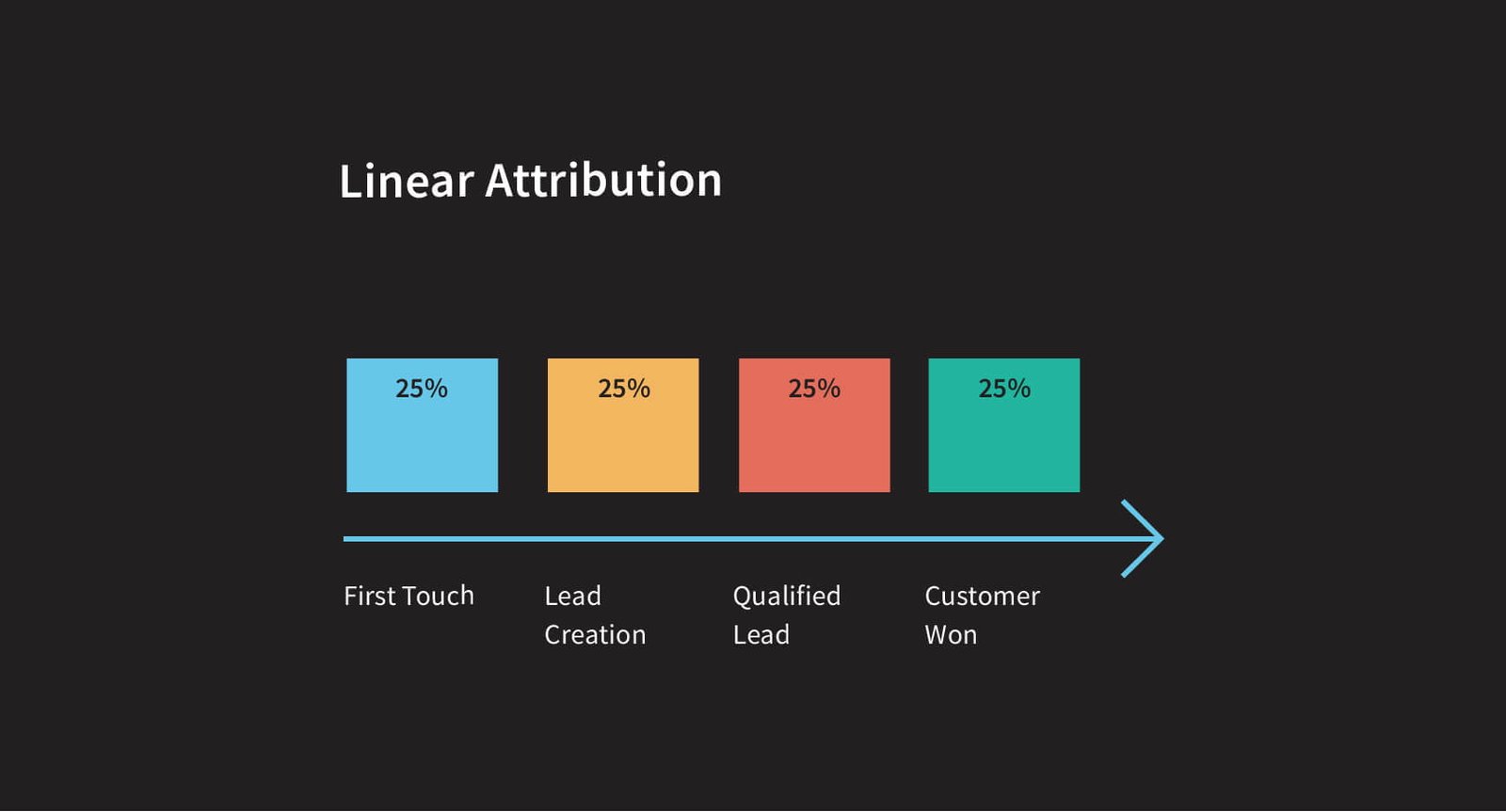
This is quite a valuable model when you want to start measuring your entire marketing funnel holistically. After sometime, you should notice that some of the channels would invariably be contributing more towards conversions. These would be the channels you should later pivot towards and optimize your marketing strategy accordingly.
When is Linear Multitouch Model Good or Bad?
The linear multitouch model is great when you are just starting to expand your channels are the complexity of your marketing strategy. It gives you a better distribution than the single touch models discussed earlier).
If you are not clear of the relative importance of the various channels in different parts of the buyer’s journey, the linear multitouch model good be a good start. Also, if you don’t have relevant data on the contribution of the various touchpoints employed.
However, giving equal credit to all the touchpoints will never be accurate. Invariably, some channels will contribute more towards your marketing objectives. This relative comparison gets hidden in this marketing attribution model.
The linear multitouch model is good if you want a nuanced solution which is easy to understand and explain to the stakeholders. It’s also an effective way of demonstrating how the individual touchpoint has value.
U-Shaped Multi-Touch Marketing Attribution Model
This is also known as the “Position based Multitouch Model”. Here, the first and last touchpoint before conversions are given the maximum weightage, and hence get the most credit (typically 40% each). The balance is distributed among the touchpoints the customer has engaged in between.

For example, if a prospect first visits your website directly through a Google search, looks at your LinkedIn page, and later signs up for your email newsletter, the first and third touches each receive 40% of the credit, and the Facebook visit receives the remaining 20%.
When is U-Shaped Multitouch Model Good or Bad?
The U-Shaped multitouch model is quite effective for businesses where the first and last touchpoints are very important. Because it still gives a little bit of weightages to all the other touchpoints, it is quite balanced.
With this model, the Marketing team can also get valuable insights on the touchpoint that helped initiate the customer journey and the one that led to the conversion.
W-Shaped Multi-Touch Marketing Attribution Model
This model gives the first touch, lead creation, and opportunity creation touchpoints 30% credit each. The remaining 10% of the credit is divided among other touchpoints. It’s a good choice when it’s easy to identify the stages that create opportunities.
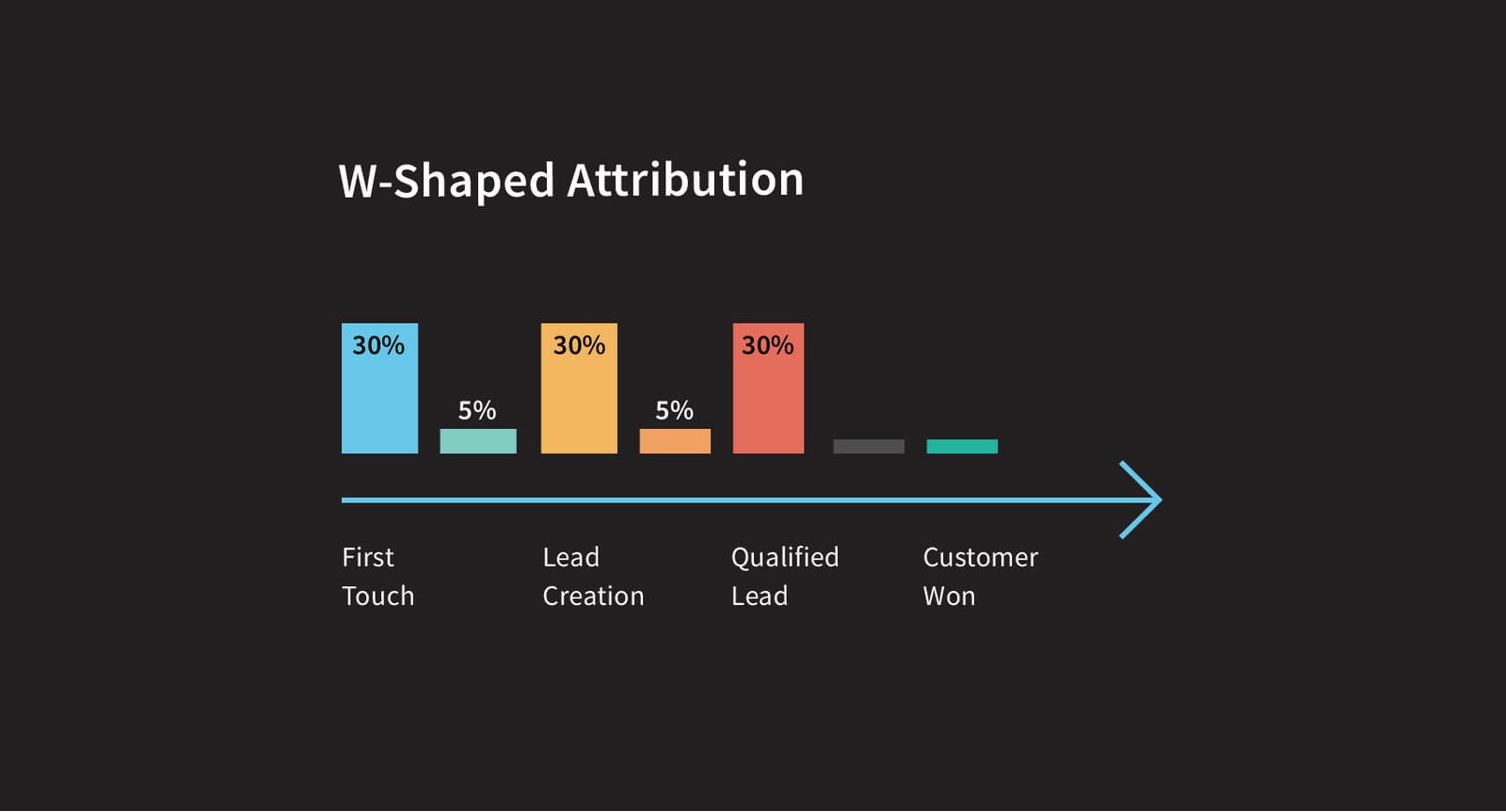
However, it’s sometimes difficult to categorize the pieces of a customer’s journey.
Time Decay Multi-Touch Marketing Attribution Model
As a marketer, conversions might be the most important KPI for you. While traffic, brand loyalty, signups are important, there’s nothing more impactful than generating revenue.

The time decay model is geared up for exactly that. It rewards touchpoints incrementally up to the channel which caused the conversion. This means that the touchpoint just before the conversion gets the maximum credit, the one before that a little less, and so on with the first touchpoint getting the least credit.
When is Time Decay Multitouch Model Good or Bad?
This attribution model is effective in determining which touchpoints are contributing to bottom of the funnel and which are the top of the funnel channels. With that insight marketers can pivot their strategies accordingly.
However, the model clearly discounts for the importance of the nurturing process, implying that bottom of the funnel channels are more important. Also, if tracking the entire customer journey is difficult, there would be large gaps, and hence inaccurate.
This might be better suited for businesses with long sales cycles – typically B2B ones with complex buyer journeys and high capital purchases.
Custom Data Driven Marketing Attribution Model
The data driven model is perhaps the most comprehensive model and customized for individual businesses. It employs advanced data science to compute the appropriate weightages so as to maximize your marketing objectives.

Google analytics and other similar packages have the option of creating a Custom Marketing attribution model. You can compare between the individual models over specific time periods to determine the one which works best for you.
When is Custom Data Driven Model Good or Bad?
Unlike a lot of the above models discussed which has many assumptions and involve taking results with a pinch of salt, the data driven model will use your past data to compute the weightages to individual touchpoints. It works automatically, is unbiased towards any particular channel and hence quite effective.
This model is the ultimate goal in terms of effectiveness and efficiency. However, as a data driven model, a data science expert will be best to work this model out. It’s best if value of individual channels is not known and if you have large ad spends. One should also be wary of the model effectiveness if one or two channels have a larger share.
How to choose the right analytics attribution model for a marketing campaign?

When it comes to choosing the best Marketing Attribution Model, one has to keep in mind there is not one that is 100% accurate. Each model has its own pros and cons which we shall discuss below.
However, there are 4 key factors to consider when making this strategic decision.
- Marketing Objectives
Your goals with respect to marketing spends should determine the most appropriate Marketing Attribution Model available based on what you are trying to measure. For the demand generation focussed, the “First-touch” Marketing Attribution Model is the best. To track conversions, the “last-touch” Model that works. To have control over the entire Marketing funnel, the “multi-touch” Marketing Attribution Model should work the best.
- Length of Sales Cycle
Based on the length of sales cycle, you would ideally want a model which works for the entirety of the cycle. For shorter lengths, a first touch or last touch model might be ok. But, for longer cycles, typically seen in the B2B space – a time delay model might be best suited. It will also help understand which channel is best for nurturing which part of the marketing funnel.
- Number of Channels:
The complexity of your marketing attribution model is directly correlated with the number of channels you are currently using. If only one or two channels are active and for a particular part of the sales funnel, it makes sense to implement a first click – for top of the funnel or last click -for bottom of the funnel activities.
- Ad Budgets:
Again, similar to the number of Channels, your ad budgets also contribute heavily to the complexity level. For higher ad budgets, there might be high segmentation in customers or funnel wise appropriate channels. So, having a position based or a ML/ data driven dynamic model might be best suited.
Here’s an infographic for primary using attribution models.
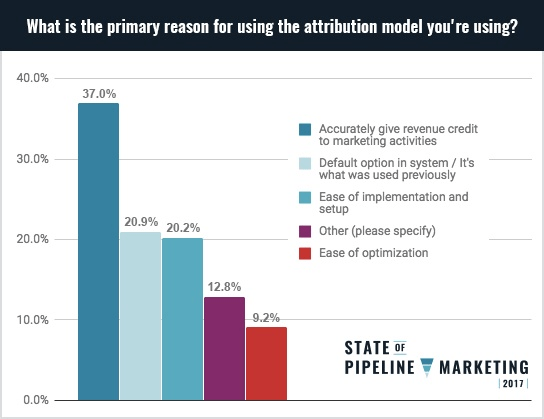
Conclusion
Remember that every Marketing Attribution Model is flawed, and can never be 100% accurate. Successful marketers work to continuously optimize and better the odds.
While it’s easy to get distracted with the ever increasing avenues to reach customers, marketers in 2021 need to recognise the importance of focussing efforts into what works for you. Once you identify the effective and efficient channels, pivoting your strategies and incremental experimentation with new channels should be the way forward.
I recommend the following 5 step process to get started.
- Start with Last Click (one that happens before the conversion)
- Expand to Multiple touch attributions
- Calibrate data driven model with marketing mix models.
- Use qualitative data from surveys to refine.
- Validate incrementality with lift and deprivation testing.



1 comment
מחפשים דירות דיסקרטיות בבת ים ?
Everything is very open with a precise clarification of the issues. It was really informative. Your website is extremely helpful. Thanks for sharing!